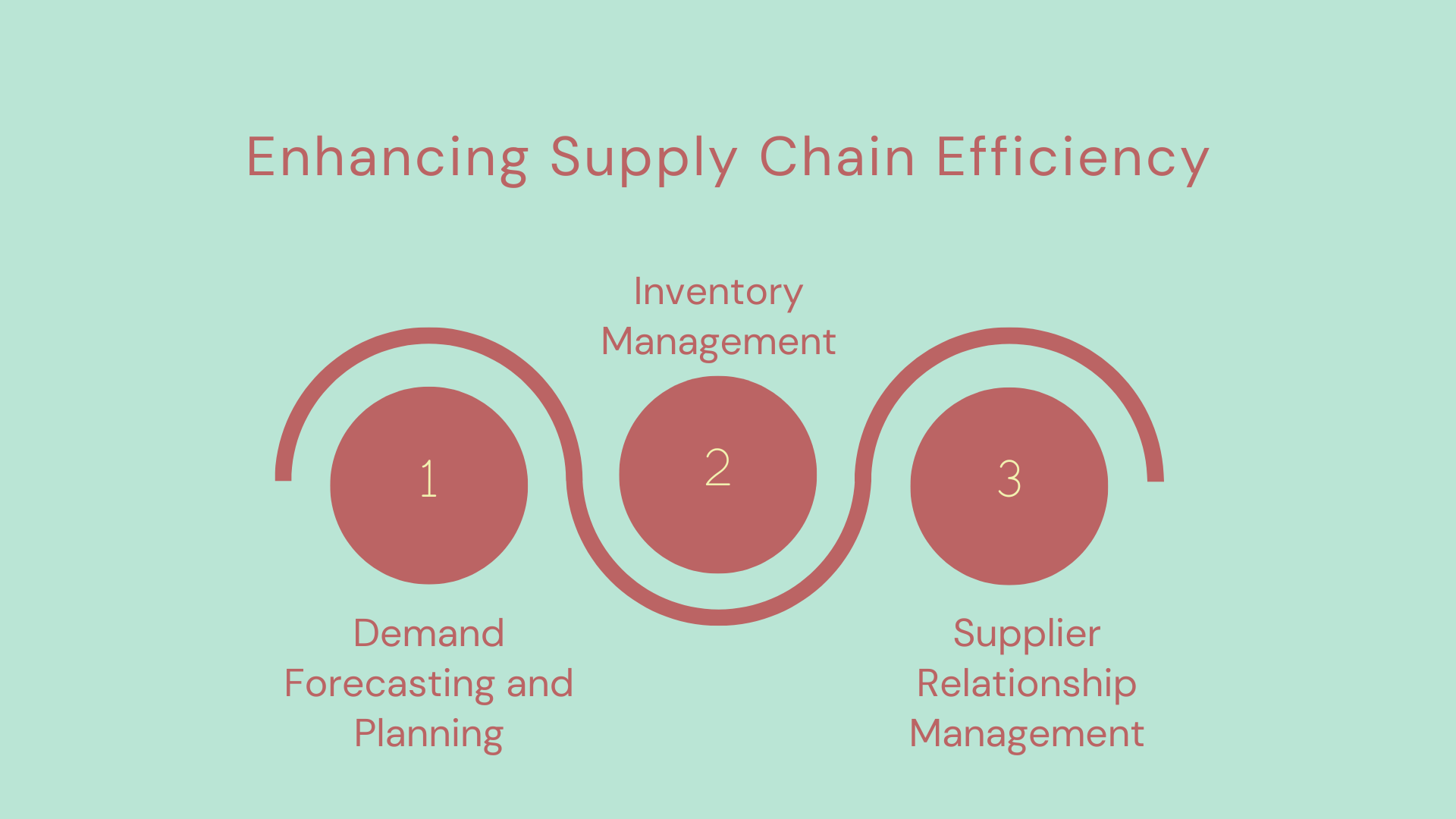
Home »
Streamlining Business Processes: For Operational Efficiency
Explore the art of streamlining business processes to achieve operational efficiency.
Introduction
Streamlining business processes has become a top priority for organizations across various industries. By leveraging technology, businesses can optimize their workflows, reduce costs, and enhance overall performance.
This article explores the importance of streamlining business processes and highlights how technology, such as
KEBS Professional Services Automation (PSA) software, can significantly contribute to operational efficiency. By automating and integrating key functions within an organization, businesses can achieve better resource management, project execution, financial control, and customer service.
Process Audit: Identifying Areas for Improvement
Before implementing any technology solution for streamlining business processes, it is crucial to conduct a process audit to identify areas that need improvement. This audit helps organizations gain a clear understanding of their current workflows, identify bottlenecks, and pinpoint areas where technology can be leveraged for operational efficiency. Here are key steps involved in conducting a process audit:
- Analyze Workflow Efficiency: Evaluate the efficiency of each workflow by analyzing the time, resources, and effort required to complete tasks. Look for any redundancies, unnecessary manual steps, or delays in the process. This analysis will help identify potential areas for improvement.
- Engage Stakeholders: Involve stakeholders from different departments, including operations, finance, sales, and customer service, to gain insights into their requirements and pain points. Collaborative discussions and feedback sessions can provide valuable input for process improvement.
- Prioritize Improvement Opportunities: Based on the findings from the process audit, prioritize improvement opportunities. Identify processes that have the most significant impact on overall operational efficiency and prioritize them for technology-enabled solutions.
- Leverage Technology Solutions: Once the areas for improvement have been identified, explore technology solutions that can streamline and automate the processes. KEBS PSA software, for example, provides comprehensive features for deal management, resource management, project management, financial management, and ticket management. Such solutions can significantly enhance operational efficiency and optimize resource utilization.

Automation: Streamlining Repetitive Tasks
In the quest for operational efficiency, one of the key strategies is to automate repetitive tasks that consume valuable time and resources. Automation can free up employees from mundane and repetitive activities, allowing them to focus on more strategic and value-added tasks.
Manual data entry is prone to errors and can be time-consuming. Automation tools can extract data from various sources, such as emails, documents, and forms, and automatically populate the relevant fields in the system. This not only saves time but also reduces the risk of human errors, ensuring data accuracy and integrity.
Many business processes involve a series of steps and approvals. Automation can help in creating predefined workflows, where tasks and approvals are automatically routed to the appropriate individuals or departments based on predefined rules. This eliminates the need for manual handoffs and ensures smooth and timely execution of processes.
Automation tools can schedule and assign tasks to employees based on predefined criteria. Reminders and notifications can be sent automatically to ensure that tasks are completed on time. This reduces the risk of missed deadlines and improves overall productivity.
Data Analytics: Driving Informed Decision-Making
In today’s data-driven business landscape, organizations have access to vast amounts of information. However, the ability to harness and analyze this data effectively is what sets successful companies apart. Data analytics plays a crucial role in streamlining business processes and driving informed decision-making.
Data analytics tools can analyze large datasets to identify trends and patterns that may not be apparent through traditional analysis methods. By uncovering hidden correlations and relationships, businesses can gain valuable insights into customer behavior, market trends, and operational performance.
Predictive analytics leverages historical data and statistical models to forecast future outcomes and trends. By applying predictive analytics techniques, businesses can anticipate customer demands, project resource requirements, and identify potential risks or opportunities. This allows them to proactively adjust their strategies and allocate resources more effectively, leading to improved operational efficiency.
With the advent of technology, businesses now have access to a wide range of collaboration and communication tools that facilitate seamless interaction among team members, departments, and external stakeholders.
Collaboration tools provide a centralized platform for document sharing and collaboration. Team members can access, edit, and collaborate on documents simultaneously, eliminating the need for multiple versions and tedious email exchanges. This streamlines the document management process, ensures version control, and reduces the risk of errors and miscommunication.
Collaboration tools also extend beyond internal teams to include external stakeholders, such as clients or partners. These tools provide secure portals or platforms where clients can collaborate, provide feedback, and access relevant project information. This fosters stronger client relationships, improves client satisfaction, and enhances project outcomes.
Collaboration tools often offer mobile accessibility, allowing team members to collaborate and communicate on the go. This flexibility enables remote work, facilitates quick decision-making, and ensures that critical information is accessible anytime, anywhere.

Supply Chain Optimization
Efficient supply chain management is crucial for businesses to achieve operational efficiency and meet customer demands. Streamlining supply chain processes not only reduces costs but also enhances customer satisfaction and overall business performance. Here’s how technology can streamline supply chain processes:
- Demand Forecasting and Planning: Technology solutions enable businesses to leverage historical data, market trends, and customer insights to accurately forecast demand. This allows organizations to plan their inventory, production, and procurement activities more efficiently. By aligning supply with demand, businesses can reduce excess inventory, minimize stockouts, and optimize their overall supply chain performance.
- Inventory Management: Technology-driven inventory management systems provide real-time visibility into inventory levels, locations, and movement. Automation tools can track inventory in warehouses, distribution centers, and retail stores, enabling businesses to optimize inventory levels, reduce carrying costs, and improve order fulfillment. Efficient inventory management ensures that the right products are available at the right time, minimizing stockouts and improving customer satisfaction.
- Supplier Relationship Management: Technology solutions facilitate effective supplier relationship management. By integrating supplier information, performance metrics, and contract terms into a centralized platform, businesses can streamline supplier selection, negotiation, and collaboration. Automated processes for supplier onboarding, order placement, and invoice reconciliation reduce manual effort and enhance supplier engagement, ensuring a smooth supply chain flow.

Customer Relationship Management (CRM) Systems
Here’s how CRM systems contribute to streamlining business processes for operational efficiency:
- Sales and Pipeline Management: CRM systems facilitate effective sales and pipeline management by providing tools to track leads, opportunities, and sales activities. Sales teams can efficiently manage their sales pipeline, track customer interactions, and monitor the progress of deals. Automation features, such as lead assignment and follow-up reminders, streamline sales processes and ensure timely engagement with prospects.
- Marketing Campaign Automation: CRM systems integrate with marketing automation tools to streamline campaign management. Businesses can create, execute, and track marketing campaigns, including email marketing, social media campaigns, and targeted advertising.
- Analytics and Reporting: CRM systems offer robust analytics and reporting capabilities, providing insights into customer behavior, sales performance, and customer service metrics. Businesses can track key performance indicators (KPIs), generate reports, and visualize data to gain actionable insights.
| Streamlining Business Processes with CRM Systems | Discover how CRM systems contribute to operational efficiency: |
| Sales and Pipeline Management | Efficiently track leads, opportunities, and sales activities. Automation tools streamline lead assignment, follow-ups, and engagement, ensuring a well-managed sales pipeline. |
| Marketing Campaign Automation | Integrate with marketing automation tools to create, execute, and track campaigns. Streamline email marketing, social media campaigns, and targeted advertising for effective outreach. |
| Analytics and Reporting | Access robust analytics and reporting capabilities. Gain insights into customer behavior, sales performance, and service metrics. Track KPIs, generate reports, and visualize data for informed decision-making. |
Integration and System Optimization
Integration refers to the seamless connectivity and data flow between different systems, applications, and departments within an organization. System optimization, on the other hand, focuses on fine-tuning and improving the performance of individual systems to maximize their efficiency. By leveraging integration and system optimization strategies, businesses can streamline their processes, enhance productivity, and achieve operational efficiency. Here’s how integration and system optimization contribute to streamlining business processes:
Streamlined Data Flow: Integration enables the smooth flow of data across different systems, eliminating the need for manual data entry or data duplication. By integrating systems such as Customer Relationship Management (CRM), Enterprise Resource Planning (ERP), and Supply Chain Management (SCM), businesses can ensure that data is consistent, accurate, and up-to-date.
Improved Collaboration and Communication: Integration fosters effective collaboration and communication by enabling real-time information sharing among team members and departments. Integrated collaboration tools, such as project management platforms, document sharing, and instant messaging applications, facilitate seamless collaboration, reducing delays, and enhancing productivity. By streamlining communication, businesses can expedite decision-making, accelerate project timelines, and improve overall operational efficiency.
Enhanced Customer Experience: Integration plays a vital role in delivering a seamless and personalized customer experience. By integrating customer-facing systems such as CRM and marketing automation platforms, businesses can gather and consolidate customer data, enabling a holistic view of customer interactions. This enables businesses to provide personalized recommendations, targeted marketing campaigns, and efficient customer support. A cohesive customer experience streamlines processes, improves customer satisfaction, and drives operational efficiency.
Enhanced Data Standardization with KEBS
KEBS, a leading Professional Services Automation (PSA) software, provides robust features that enable businesses to enhance data standardization and streamline their operations. By leveraging KEBS, businesses can establish consistent data practices, improve data integrity, and drive operational efficiency. Here’s how KEBS facilitates enhanced data standardization:
- Centralized Data Management: KEBS offers a centralized platform where businesses can store, manage, and access data related to projects, resources, finances, and customer interactions. With a unified data repository, businesses can ensure that data is consistent, accurate, and up-to-date across different functions and departments.
- Customizable Data Structures and Workflows: KEBS allows businesses to customize data structures and workflows based on their specific requirements. This flexibility enables businesses to align KEBS with their existing data models and business processes. By tailoring data structures and workflows, businesses can ensure that KEBS captures relevant data points, aligns with internal processes, and supports standardized data practices.
- Data Governance and Quality Controls: KEBS provides features for data governance and quality controls, allowing businesses to define and enforce data standards, access controls, and data governance policies.
- Reporting and Analytics: KEBS offers robust reporting and analytics capabilities, enabling businesses to generate insightful reports and derive actionable insights. By leveraging standardized data stored in KEBS, businesses can create comprehensive reports, perform trend analysis, and gain a holistic view of their operations.
In conclusion, KEBS plays a vital role in enhancing data standardization and streamlining business processes for operational efficiency.
| Enhanced Data Standardization with KEBS | Leverage KEBS to establish consistent data practices and drive operational efficiency: |
| Centralized Data Management | Store, manage, and access project, resource, financial, and customer data in a unified platform, ensuring consistency and accuracy across functions. |
| Customizable Data Structures and Workflows | Tailor data structures and workflows to align with existing business processes, capturing relevant data points and supporting standardized practices. |
| Data Governance and Quality Controls | Define and enforce data standards, access controls, and governance policies to maintain data quality and compliance. |
| Reporting and Analytics | Generate comprehensive reports and gain insights using standardized data stored in KEBS for trend analysis and operational insights. |
Conclusion
In the fast-paced and competitive business landscape, streamlining processes and achieving operational efficiency are critical for success.
KEBS, a leading Professional Services Automation (PSA) software, offers a comprehensive suite of features and capabilities designed to optimize business operations and drive efficiency.
Take your organization to the next level!









